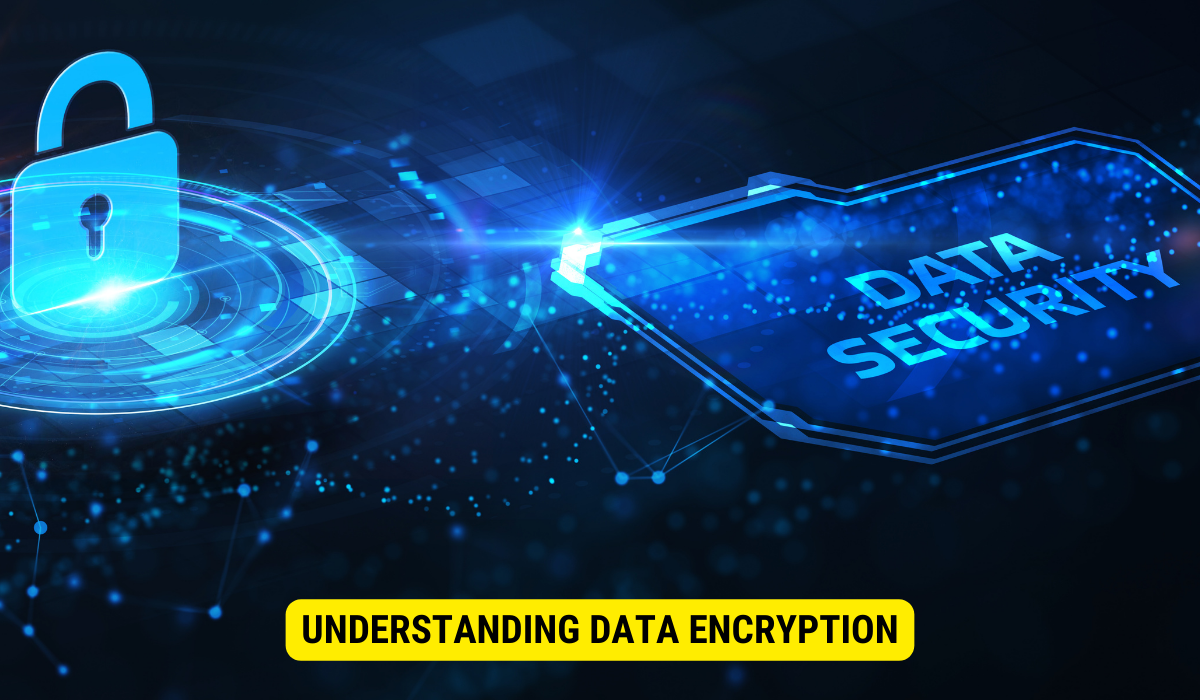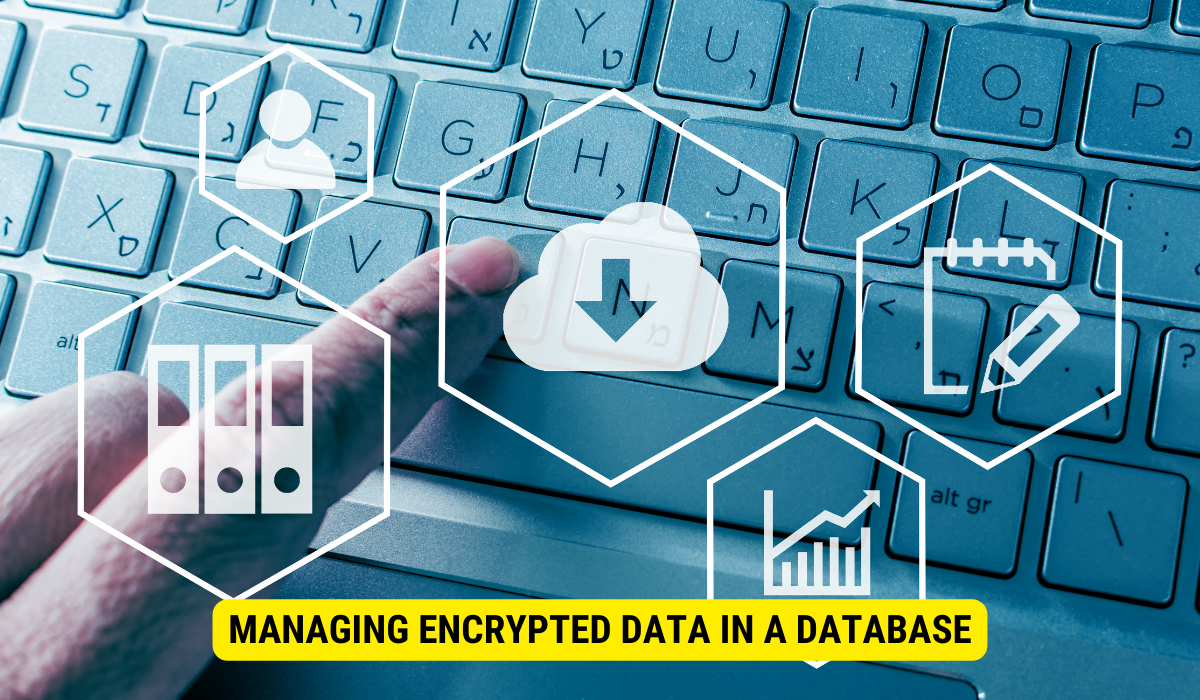Encrypting data before storing it in a database involves converting it into an unreadable format to protect it from unauthorized access. This can be achieved using various encryption algorithms and techniques, and it’s imperative to choose the right method based on the data’s sensitivity and the organization’s security requirements.
Data security is a critical concern for businesses in the digital age. With the increasing reliance on databases to store sensitive information, it is crucial to implement robust encryption techniques to protect data from unauthorized access. I will explore encrypting data to store in a database and discuss the different encryption techniques, steps to encrypt data, managing encrypted data, and common challenges and solutions.
Understanding Data Encryption

Data encryption is the process of converting data into a format that unauthorized individuals cannot easily understand. It provides an extra layer of protection by ensuring that even if the data is accessed, it remains unreadable without the necessary decryption key.
Data encryption has become increasingly important in today’s digital age, where the amount of sensitive information transmitted and stored is growing exponentially. From personal information like social security numbers and credit card details to business data like trade secrets and customer databases, there is a constant need to safeguard this information from prying eyes.
The Basics of Data Encryption
Data encryption involves using an algorithm and a key to transform the original data into ciphertext, making it unreadable. The encryption algorithm determines how the data is transformed, while the encryption key is the information used to encrypt and decrypt the data.
Various encryption algorithms are available, each with its strengths and weaknesses. Some popular encryption algorithms include Advanced Encryption Standard (AES), Rivest Cipher (RC), and Data Encryption Standard (DES). These algorithms use complex mathematical functions to scramble the data, making it virtually impossible to decipher without the correct key.
Additionally, the encryption key plays a crucial role in the encryption process. The key is a unique piece of information used to encrypt the data and is required to decrypt it. Without the correct key, the encrypted data remains unreadable, ensuring that even if an unauthorized individual gains access, they cannot understand it.
Types of Data Encryption
There exist two primary categories of encryption techniques: symmetric and asymmetric encryption. Symmetric encryption, also called secret key encryption, employs an identical key for both the encryption and decryption processes. Consequently, to ensure secure communication, the sender and receiver of encrypted data must possess and use the same key.
In contrast, asymmetric encryption, commonly known as public key encryption, relies on a pair of keys: a public key and a private key. The public key encrypts the data, while the private key is employed for decryption. This approach facilitates secure communication, even if the sender and receiver have never exchanged keys previously.
Importance of Encrypting Data
Encrypting data is crucial for several reasons. Firstly, it helps ensure the confidentiality of sensitive information, such as personal and financial data, by making it unreadable to unauthorized individuals. This is particularly important in industries like healthcare and finance, where the privacy of patient records and financial transactions is paramount.
Secondly, data encryption helps maintain data integrity, as any unauthorized modifications to the encrypted data will render it unreadable. This ensures the data remains unaltered during transmission or storage, ensuring the information is not tampered with.
Lastly, data encryption helps organizations comply with various data protection regulations and standards. Many countries have applied strict data protection laws that require organizations to encrypt sensitive data to protect the privacy of their customers. Failure to obey these rules and principles can result in fines and damage to the organization’s reputation.
In conclusion, data encryption is a vital component of modern-day cybersecurity. It delivers a secure way to protect sensitive information, maintain data integrity, and comply with data protection regulations. By understanding the basics of data encryption and its importance, individuals and organizations can take the necessary steps to safeguard their data in an increasingly digital world.
Types of Data Encryption Techniques

There are different techniques of data encryption, each with its strengths and weaknesses. Understanding these techniques is essential for choosing the right approach for your requirements.
Symmetric Encryption
Symmetric encryption, also called secret key encryption, employs an identical key for encryption and decryption. The sender and receiver must understand this key better before communicating. Although symmetric encryption boasts speed and efficiency, the key distribution can present difficulties, particularly in numerous user scenarios.
The Advanced Encryption Standard (AES) is among the prevalent symmetric encryption algorithms. AES enjoys widespread adoption and offers robust security. It functions with fixed-size data blocks and accommodates key lengths of 128, 192, and 256 bits.
Another popular symmetric encryption algorithm is the Data Encryption Standard (DES). DES was widely used in the past but is now considered relatively weak due to its small key size of 56 bits. More secure algorithms like AES have replaced it.
In addition to AES and DES, other symmetric encryption algorithms, such as Triple DES (3DES), apply DES three times to each data block, providing increased security.
Asymmetric Encryption
Asymmetric encryption, also called public key encryption, employs a pair of keys: a public key for encryption and a private key for decryption. The public key is readily accessible, whereas the private key is confidential. This encryption method obviates the necessity of exchanging a shared key, rendering it more suitable for scenarios necessitating secure communication.
The RSA algorithm is the most widely utilized asymmetric encryption algorithm, christened after its inventors, Rivest, Shamir, and Adleman. RSA relies on the mathematical challenge of factoring large prime numbers. It enjoys broad adoption and delivers robust security for diverse applications, encompassing secure email communication and digital signatures.
Another prevalent asymmetric encryption algorithm is Elliptic Curve Cryptography (ECC). ECC draws from the principles of elliptic curves in mathematics and affords an equivalent level of security as RSA, albeit with shorter key lengths. This results in expedited computations and reduced resource demands.
Beyond RSA and ECC, various other asymmetric encryption algorithms, such as Diffie-Hellman key exchange, enable two parties to begin a shared secret key over an insecure communication channel.
It is worth noting that asymmetric encryption is computationally more expensive than symmetric encryption. Therefore, a common practice is to use asymmetric encryption for key exchange and symmetric encryption for actual data encryption, combining the benefits of both approaches.
Steps to Encrypt Data Before Storing in a Database
Preparing Your Data for Encryption
Before encrypting the data, it is essential to identify the specific data that needs to be protected. This step involves classifying the data based on sensitivity and defining the encryption requirements accordingly.
Choosing the Right Encryption Technique
You need to select an appropriate encryption technique based on the data classification. Consider security requirements, key management complexity, and performance implications before deciding between symmetric and asymmetric encryption.
Implementing the Encryption Process
Once you have chosen the encryption technique, it is time to implement the encryption process. This involves integrating encryption libraries or modules into your database system and configuring them to encrypt the data before storing it.
It is important to ensure that the encryption process is seamless, transparent to users, and does not impact the inclusive performance of the database.
Managing Encrypted Data in a Database

Accessing and Decrypting Your Data
To access and decrypt the encrypted data stored in the database, you need to implement mechanisms for authentication and authorization. Only authorized users with the necessary decryption keys should be able to access and decrypt the data.
Proper user access controls and user management systems should be in place to safeguard that only authorized individuals can decrypt and access sensitive data.
Maintaining Security of Encrypted Data
Maintaining the security of encrypted data goes beyond just encrypting the information. It involves implementing additional security measures such as regular key rotation, strong password policies, and monitoring for suspicious activities or attempted breaches.
Consistent audits and vulnerability assessments should be conducted to identify and address security gaps or weaknesses in the encryption process.
Common Challenges and Solutions in Data Encryption
Dealing with Encryption Key Management
Effective key management is critical to the success of any encryption strategy. Managing encryption keys involves generating, storing, distributing, and revoking keys securely. Organizations should consider implementing key management systems or securing key vaults to protect their encryption keys.
Overcoming Performance Issues
Data encryption can impact database performance due to the additional processing overhead involved. It is important to consider factors such as hardware acceleration, optimized encryption algorithms, and efficient key management practices to overcome performance issues.
Monitoring and profiling database performance can help identify bottlenecks and optimize encryption.
Key Takeaways
- Data encryption is pivotal in safeguarding sensitive information stored in databases from unauthorized access.
- The primary encryption techniques are symmetric and asymmetric, each with unique benefits and challenges.
- Effective key management, which involves generating, storing, and protecting encryption keys, is vital for the success of any encryption strategy.
- While encryption enhances data security, it might introduce performance overheads, so optimization techniques and monitoring are crucial.
- Regular security audits, vulnerability assessments, and monitoring are essential to maintain the integrity and security of encrypted data.
FAQs
What is data encryption?
Data encryption is the process of converting data into a format that can’t be easily understood without a decryption key, ensuring data security.
What are the main types of data encryption?
The primary encryption techniques are symmetric encryption, which uses a single key for encryption and decryption, and asymmetric encryption, which employs a pair of keys – a public one for encryption and a private one for decryption.
How do I choose the right encryption technique for my database?
The choice depends on data sensitivity, security requirements, key management complexity, and performance implications. Often, a combination of symmetric and asymmetric encryption is used.
How do you manage encrypted data in a database?
Implement authentication and authorization mechanisms to manage encrypted data, ensuring only authorized users with the decryption keys can access the data. Additionally, implement key management systems and regular security audits.
What are the common challenges faced when encrypting database data?
Common challenges include managing encryption keys securely, overcoming potential performance issues, and ensuring ongoing monitoring for security threats.
Conclusion
In conclusion, encrypting data before storing it in a database is critical in ensuring data security and privacy. Organizations can strengthen their data protection measures and comply with various regulatory requirements by understanding the basics of data encryption, selecting the appropriate encryption technique, and implementing the necessary steps to encrypt and manage the data. Although data encryption presents challenges, such as encryption key management and performance considerations, these can be overcome with proper planning and implementation of best practices. Embracing data encryption will ultimately contribute to safeguarding sensitive information and upholding the trust of customers and stakeholders.
